|
|
|||||||||||||||||||||||||||||||
|
The History of Alcohol and Alcohol Abuse
By Andrew Watson Alcohol is a product that has provided a variety of functions for people throughout all history. From the earliest times to the present, alcohol has played an important role in religion and worship. Historically, alcoholic beverages have served as sources of needed nutrients and have been widely used for their medicinal, antiseptic, and analgesic properties. The role of such beverages as thirst quenchers is obvious and they play an important role in enhancing the enjoyment and quality of life. They can be a social lubricant, can facilitate relaxation, can provide pharmacological pleasure, and can increase the pleasure of eating. Thus, while alcohol has always been misused by a minority of drinkers, it has proved to be beneficial to most. ANCIENT PERIOD While no one knows when beverage alcohol was first used, it was presumably the result of a fortuitous accident that occurred at least tens of thousands of years ago. However, the discovery of late Stone Age beer jugs has established the fact that intentionally fermented beverages existed at least as early as the Neolithic period (cir. 10,000 B.C.) (Patrick, 1952, pp. 12-13), and it has been suggested that beer may have preceded bread as a staple (Braidwood et al, 1953; Katz and Voigt, 1987); wine clearly appeared as a finished product in Egyptian pictographs around 4,000 B.C. (Lucia, 1963a, p. 216). The earliest alcoholic beverages may have been made from berries or honey (Blum et al, 1969, p. 25; Rouech, 1960, p. 8; French, 1890, p. 3) and winemaking may have originated in the wild grape regions of the Middle East. Oral tradition recorded in the Old Testament (Genesis 9:20) asserts that Noah planted a vineyard on Mt. Ararat in what is now eastern Turkey. In Sumer, beer and wine were used for medicinal purposes as early as 2,000 B.C. (Babor, 1986, p. 1).
Wine making goes back to ancient antiquity well into the predynastic eras, and existed for use of rulers and nobles. Plutarch tells us that “Osiris was the first to drink wine and teach man how to plant the vine.” Although wine, known as yrp, was generally for the elite of Egypt (being expensive), the lower classes got their fair share of it at public feasts such as the Festival of Hathor — one of her functions being goddess of wine and intoxication. It could sometimes be given to workers as wages and was used a rewards to soldiers. It was also used as offerings to the gods and the dead, the resurrected Pharoah was known as “One of the four gods…who live on figs and who drinks wine.” Experts believe the old kingdom produced red wine, while the middle kingdom produced white. However, recent tests have shown that the wine that was placed in King Tut's tomb was red. First dynasty tombs of Abydos record the existence of vinyards, including the earliest record of wine cellars. The finest vinyards were found in the delta, Faiyum, Memphis and then southern Egypt and the Oaisis. The best site was always on a hill and when there wasn’t a hill the Egyptians went to work raising a plot of land and then planting the vines, which were often grown on special trellises. vinyards were generally enclosed by a wall and many things were grown inside them, such as fruit trees, vegetables and various flowers. In fact, there were several types of early Egyptian vinyards. The first incorporated grapevines into a formal garden for creating beauty as well as for utility. The second was a work of agriculture and existed in an orchard garden along with fruit trees and vegetables. The third was a formal vinyard as we know them today. The 3rd dynastic administrator of northern Egypt, Methen, had a garden-vine at his estate and a regular vinyard by itself in another area. In addition to nobles owning vinyards, temples might have a vinyard on their temples estates. Ramesses III listed 513 vinyards belonging to the temple of Amon-Ra. And, of course, Pharaoh had his as well. Pi-Ramesses was the site of a famous royal vinyard called the Preserver of Kemet.
As we all know, ancient Egypt was well known for its beer, which they called hqt (heket). Hqt was the national drink of Egypt, consumed by adults and children alike, and is commonly called the drink of the poor because in pharonic times the average wage included two jars of hqt or just over two liters. However, it was also enjoyed by the upper classes. Like wine it was offered to the gods and put in the tombs of the dead. Some of the gods and goddesses associated with beer are Osiris, Isis, Bast, Sekhmet, Hathor, and Tenenet. (Legend holds that it was Osiris who taught mankind to make beer.) An example of the offering of beer and wine to the dead can be seen in the tomb of Nakht, scribe and priest of the hours at the temple of Amun, in Sheikh Abd el-Qurna (the hill to the north of the Ramesseum). “Large scale beer production was a royal monopoly, temples had their own breweries and in towns and villages breweries were farmed out.” An ancient brewery found at Nekhen (Hierakonpolis) gives us a glimpse at what a large scale brewery would look like, it would house large ceramic vats, fermenting pots and kilns that could heat large volumes of liquid. The ceramic vats found at Hierakonpolis were in parallel rows and set in a mud platform and was likely covered in a structure to contain heat. The vats could possibly hold about 16 gallons each. Making beer was possibly a two day process, one day to bring the brew to the correct temperature and cool it, then one day to ferment. It is likely that the beer was moved from the vats to other vessels to ferment, and if this is true, large volumes could be made on a daily basis. Brewing dates from the beginning of civilization in ancient Egypt (Cherrington, 1925, v. 1, p. 404) and alcoholic beverages were very important in that country. Symbolic of this is the fact that while many gods were local or familial, Osiris, the god of wine, was worshiped throughout the entire country (Lucia, 1963b, p. 152). The Egyptians believed that this important god also invented beer (King, 1947, p. 11), a beverage that was considered a necessity of life; it was brewed in the home "on an everyday basis" (Marciniak, 1992, p. 2). Both beer and wine were deified and offered to gods. Cellars and winepresses even had a god whose hieroglyph was a winepress (Ghaliounqui, 1979, p. 5). The ancient Egyptians made at least seventeen varieties of beer and at least 24 varieties of wine (Ghaliounqui, 1979, pp. 8 and 11). Alcoholic beverages were used for pleasure, nutrition, medicine, ritual, remuneration (Cherrington, 1925, v, 1, p. 405) and funerary purposes. The latter involved storing the beverages in tombs of the deceased for their use in the after-life (King, 1947, p. 11; Darby, 1977, p.576). Numerous accounts of the period stressed the importance of moderation, and these norms were both secular and religious (Darby, 1977, p. 58). While Egyptians did not generally appear to define inebriety as a problem, they warned against taverns (which were often houses of prostitution) and excessive drinking (Lutz, 1922, pp. 97,105-108). After reviewing extensive evidence regarding the widespread but generally moderate use of alcoholic beverage, the historian Darby makes a most important observation: all these accounts are warped by the fact that moderate users "were overshadowed by their more boisterous counterparts who added 'color' to history" (Darby, 1977, p. 590). Thus, the intemperate use of alcohol throughout history receives a disproportionate amount of attention. Those who abuse alcohol cause problems, draw attention to themselves, are highly visible and cause legislation to be enacted. The vast majority of drinkers, who neither experience nor cause difficulties, are not noteworthy. Consequently, observers and writers largely ignore moderation. Beer was the major beverage among the Babylonians, and as early as 2,700 B.C. they worshiped a wine goddess and other wine deities (Hyams, 1965, pp. 38-39). Babylonians regularly used both beer and wine as offerings to their gods (Lutz, 1922, pp. 125-126). Around 1,750 B.C., the famous Code of Hammurabi devoted attention to alcohol. However, there were no penalties for drunkenness; in fact, it was not even mentioned. The concern was fair commerce in alcohol (Popham, 1978, pp. 232-233). Nevertheless, although it was not a crime, it would appear that the Babylonians were critical of drunkenness (Lutz, 1922, pp. 115-116). 1 A variety of alcoholic beverages have been used in China since prehistoric times (Granet, 1957, p. 144). Alcohol was considered a spiritual (mental) food rather than a material (physical) food, and extensive documentary evidence attests to the important role it played in the religious life (Hucker, 1975, p. 28; Fei-Peng, 1982, p. 13). "In ancient times people always drank when holding a memorial ceremony, offering sacrifices to gods or their ancestors, pledging resolution before going into battle, celebrating victory, before feuding and official executions, for taking an oath of allegiance, while attending the ceremonies of birth, marriage, reunions, departures, death, and festival banquets" (Fei-Peng, 1982, p. 13). A Chinese imperial edict of about 1,116 B.C. makes it clear that the use of alcohol in moderation was believed to be prescribed by heaven. Whether or not it was prescribed by heaven, it was clearly beneficial to the treasury. At the time of Marco Polo (12547-1324?) it was drunk daily (Gernet, 1962, p. 139) and was one of the treasury's biggest sources of income (Balazs, 1964, p. 97). Alcoholic beverages were widely used in all segments of Chinese society, were used as a source of inspiration, were important for hospitality, were an antidote for fatigue, and were sometimes misused (Samuelson, 1878, pp. 19-20, 22, 26-27; Fei-Peng, 1982, p. 137; Simons, 1991, pp. 448-459). Laws against making wine were enacted and repealed forty-one times between 1,100 B.C. and A.D. 1,400. (Alcoholism and Drug Addiction Research Foundation of Ontario, 1961, p. 5). However, a commentator writing around 650 B.C. asserted that people "will not do without beer. To prohibit it and secure total abstinence from it is beyond the power even of sages. Hence, therefore, we have warnings on the abuse of it" (quoted in Rouecbe, 1963, p. 179; similar translation quoted in Samuelson, 1878, p. 20). While the art of wine making reached the Hellenic peninsula by about 2,000 B.C. (Younger, 1966, p. 79), the first alcoholic beverage to obtain widespread popularity in what is now Greece was mead, a fermented beverage made from honey and water. However, by 1,700 B.C., wine making was commonplace, and during the next thousand years wine drinking assumed the same function so commonly found around the world: It was incorporated into religious rituals, it became important in hospitality, it was used for medicinal purposes and it became an integral part of daily meals (Babor, 1986, pp. 2-3). As a beverage, it was drunk in many ways: warm and chilled, pure and mixed with water, plain and spiced (Raymond, 1927, p. 53). Contemporary writers observed that the Greeks were among the most temperate of ancient peoples. This appears to result from their rules stressing moderate drinking, their praise of temperance, their practice of diluting wine with water, and their avoidance of excess in general (Austin, 1985, p. 11). An exception to this ideal of moderation was the cult of Dionysus, in which intoxication was believed to bring people closer to their deity (Sournia, 1990, pp. 5-6; Raymond, 1927, p. 55). While habitual drunkenness was rare, intoxication at banquets and festivals was not unusual (Austin, 1985, p. 11). In fact, the symposium, a gathering of men for an evening of conversation, entertainment and drinking typically ended in intoxication (Babor, 1986, p. 4). However, while there are no references in ancient Greek literature to mass drunkenness among the Greeks, there are references to it among foreign peoples (Patrick, 1952, p. 18). By 425 B.C., warnings against intemperance, especially at symposia, appear to become more frequent (Austin, 1985, pp. 21-22).
Xenophon (431-351 B.C.) and Plato (429-347 B.C.) both praised the moderate use of wine as beneficial to health and happiness, but both were critical of drunkenness, which appears to have become a problem. Hippocrates (cir. 460-370 B.C.) identified numerous medicinal properties of wine, which had long been used for its therapeutic value (Lucia, 1963a, pp. 36-40). Later, both Aristode (384-322 B.C.) and Zeno (cir. 336-264 B.C.) were very critical of drunkenness (Austin, 1985, pp. 23, 25, and 27). Among Greeks, the Macedonians viewed intemperance as a sign of masculinity and were well known for their drunkenness. Their king, Alexander the Great (336-323 B.C.), whose mother adhered to the Dionysian cult, developed a reputation for inebriety (Souria, 1990, pp. 8-9; Babor, 1986, p. 5). The Hebrews were reportedly introduced to wine during their captivity in Egypt. When Moses led them to Canaan (Palestine) around 1,200 B.C., they are reported to have regretted leaving behind the wines of Egypt (Numbers 20:5); however, they found vineyards to be plentiful in their new land (Lutz, 1922, p. 25). Around 850 B.C., the use of wine was criticized by the Rechabites and Nazarites, 2 two conservative nomadic groups who practiced abstinence from alcohol (Lutz, 1922, p. 133; Samuelson, 1878, pp. 62-63). In 586 B.C., the Hebrews were conquered by the Babylonians and deported to Babylon. However, in 539 B.C., the Persians captured the city and released the Hebrews from their Exile (Daniel 5:1-4). Following the Exile, the Hebrews developed Judaism as it is now known, and they can be said to have become Jews. During the next 200 years, sobriety increased and pockets of antagonism to wine disappeared. It became a common beverage for all classes and ages, including the very young; an important source of nourishment; a prominent part in the festivities of the people; a widely appreciated medicine; an essential provision for any fortress; and an important commodity. In short, it came to be seen as a necessary element in the life of the Hebrews (Raymond, 1927, p. 23). While there was still opposition to excessive drinking, it was no longer assumed that drinking inevitably led to drunkenness. Wine came to be seen as a blessing from God and a symbol of joy (Psalms 104; Zachariah 10:7). These changes in beliefs and behaviors appear to be related to a rejection of belief in pagan gods, a new emphasis on individual morality, and the integration of secular drinking behaviors into religious ceremonies and their subsequent modification (Austin, 1985, pp. 18-19; Patai, 1980, pp. 61-73; Keller, 1970, pp. 290-294). Around 525 B.C., it was ruled that the Kiddush (pronouncement of the Sabbath) should be recited over a blessed cup of wine. This established the regular drinking of wine in Jewish ceremonies outside the Temple (Austin, 1985, p. 19). King Cyrus of Persia frequently praised the virtue of the moderate consumption of alcohol (cir. 525 B.C.). However, ritual intoxication appears to have been used as an adjunct to decision making and, at least after his death, drunkenness was not uncommon (Austin, 1985, p. 19). Between the founding of Rome in 753 B.C. until the third century B.C., there is consensus among historians that the Romans practiced great moderation in drinking (Austin, 1985, p. 17). After the Roman conquest of the Italian peninsula and the rest of the Mediterranean basin (509 to 133 B.C.), the traditional Roman values of temperance, frugality and simplicity were gradually replaced by heavy drinking, ambition, degeneracy and corruption (Babor, 1986, p. 7; Wallbank & Taylor, 1954, p. 163). The Dionysian rites (Bacchanalia, in Latin) spread to Italy during this period and were subsequently outlawed by the Senate (Lausanne, 1969, p. 4; Cherrington, 1925, v. 1, pp. 251-252). Practices that encouraged excessive drinking included drinking before meals on an empty stomach, inducing vomiting to permit the consumption of more food and wine, and drinking games. The latter included, for example, rapidly consuming as many cups as indicated by a throw of the dice (Babor, 1986, p. 10). By the second and first centuries B.C., intoxication was no longer a rarity, and most prominent men of affairs (for example, Cato the Elder and Julius Caesar) were praised for their moderation in drinking. This would appear to be in response to growing misuse of alcohol in society, because before that time temperance was not singled out for praise as exemplary behavior. As the republic continued to decay, excessive drinking spread and some, such as Marc Antony (d. 30 B.C.), even took pride in their destructive drinking behavior (Austin, 1985, pp. 28 and 32-33).
With the dawn of Christianity and its gradual displacement of the previously dominant religions, the drinking attitudes and behaviors of Europe began to be influenced by the New Testament (Babor, 1986, p. 11). The earliest biblical writings after the death of Jesus (cir. A.D. 30) contain few references to alcohol. This may have reflected the fact that drunkenness was largely an upper-status vice with which Jesus had little contact (Raymond, 1927, pp. 81-82). Austin (1985, p. 35) has pointed out that Jesus used wine (Matthew 15:11; Luke 7:33-35) and approved of its moderate consumption (Matthew 15:11). On the other hand, he severely attacked drunkenness (Luke 21:34,12:42; Matthew 24:45-51). The later writings of St. Paul (d. 64?) deal with alcohol in detail and are important to Christian doctrine on the subject. He considered wine to be a creation of God and therefore inherently good (1 Timothy 4:4), recommended its use for medicinal purposes (1 Timothy 5:23), but consistently condemned drunkenness (1 Corinthians 3:16-17,5:11,6:10; Galatians 5:19-21; Romans 13:3) and recommended abstinence for those who could not control their drinking. 3 However, late in the second century, several heretical sects rejected alcohol and called for abstinence. By the late fourth and early fifth centuries, the Church responded by asserting that wine was an inherently good gift of God to be used and enjoyed. While individuals may choose not to drink, to despise wine was heresy. The Church advocated its moderate use but rejected excessive or abusive use as a sin. Those individuals who could not drink in moderation were urged to abstain (Austin, 1985, pp. 44 and 47-48). It is clear that both the Old and New Testaments are clear and consistent in their condemnation of drunkenness. However, some Christians today argue that whenever "wine" was used by Jesus or praised as a gift of God, it was really grape juice; only when it caused drunkenness was it wine. Thus, they interpret the Bible as asserting that grape juice is good and that drinking it is acceptable to God but that wine is bad and that drinking it is unacceptable. This reasoning appears to be incorrect for at least two reasons. First, neither the Hebrew nor Biblical Greek word for wine can be translated or interpreted as referring to grape juice. Secondly, grape juice would quickly ferment into wine in the warm climate of the Mediterranean region without refrigeration or modern methods of preservation (Royce, 1986, pp. 55-56; Raymond, 1927, pp. 18-22; Hewitt, 1980, pp. 11-12). The spread of Christianity and of viticulture in Western Europe occurred simultaneously (Lausanne, 1969, p. 367; Sournia, 1990, p. 12). Interestingly, St. Martin of Tours (316-397) was actively engaged in both spreading the Gospel and planting vineyards (Patrick, 1952, pp. 26-27). In an effort to maintain traditional Jewish culture against the rise of Christianity, which was converting numerous Jews (Wallbank & Taylor, 1954, p. 227), detailed rules concerning the use of wine were incorporated into the Talmud. Importantly, wine was integrated into many religious ceremonies in limited quantity (Spiegel, 1979, pp. 20 -29; Raymond, 1927, 45-47). In the social and political upheavals that rose as the fall of Rome approached in the fifth century, concern grew among rabbis that Judaism and its culture were in increasing danger. 4 Consequently, more Talmudic rules were laid down concerning the use of wine. These included the amount of wine that could be drunk on the Sabbath, the way in which wine was to be drunk, the legal status of wine in any way connected with idolatry, and the extent of personal responsibility for behavior while intoxicated (Austin, 1985, pp. 36 and 50). Roman abuse of alcohol appears to have peaked around mid-first century (Jellinek, 1976, pp. 1,736-1,739). Wine had become the most popular beverage, and as Rome attracted a large influx of displaced persons, it was distributed free or at cost (Babor, 1986, pp. 7-8). This led to occasional excesses at festivals, victory triumphs and other celebrations, as described by contemporaries. The four emperors who ruled from A.D. 37 to A.D. 69 were all known for their abusive drinking. However, the emperors who followed were known for their temperance, and literary sources suggest that problem drinking decreased substantially in the Empire. Although there continued to be some criticisms of abusive drinking over the next several hundred years, most evidence indicates a decline of such behavior (Austin, 1985 pp. 37-44, p. 46, pp. 48-50). The fall of Rome and the Western Roman Empire occurred in 476 (Wallbank & Taylor, 1954, pp. 220-221). Around A.D. 230, the Greek scholar Athenaeus wrote extensively on drinking and advocated moderation. The extensive attention to drinking, famous drinks, and drinking cups (of which he described 100) reflected the importance of wine to the Greeks (Austin, 1985, pp. 45-46).
The Middle Ages, that period of approximately one thousand years between the fall of Rome and the beginning of the High Renaissance (cir. 1500), saw numerous developments in life in general and in drinking in particular. In the early Middle Ages, mead, rustic beers, and wild fruit wines became increasingly popular, especially among Celts, Anglo-Saxons, Germans, and Scandinavians. However, wines remained the beverage of preference in the Romance countries (what is now Italy, Spain and France) (Babor, 1986, p. 11). With the collapse of the Roman Empire and decline of urban life, religious institutions, particularly monasteries, became the repositories of the brewing and winemaking techniques that had been earlier developed (Babor, 1986, p. 11). While rustic beers continued to be produced in homes, the art of brewing essentially became the province of monks, who carefully guarded their knowledge (Cherrington, 1925, v. 1, p. 405). Monks brewed virtually all beer of good quality until the twelfth century. Around the thirteenth century, hops (which both flavors and preserves) became a common ingredient in some beers, especially in northern Europe (Wilson, 1991, p. 375). 5 Ale, often a thick and nutritious soupy beverage, soured quickly and was made for local consumption (Austin, 1985, p. 54, pp. 87-88). Not surprisingly, the monasteries also maintained viticulture. Importantly, they had the resources, security, and stability in that often-turbulent time to improve the quality of their vines slowly over time (Seward, 1979, pp. 15 and 25-35). The monks also had the education and time necessary to enhance their viticultural skills (Lichine, 1974, p. 3). Throughout the Middle Ages, the best vineyards were owned and tended by the monasteries, and vinum theologium was considered superior to others (Patrick, 1952, p. 27). In addition to making wine necessary to celebrate the mass, the monasteries also produced large quantities to support the maintenance and expansion of the monastic movement (Babor, 1986, p. 11). While most wine was made and consumed locally, some wine trade did continue in spite of the deteriorating roads (Hyams, 1965, p. 151; Wilson, 1991, p. 371). By the millennium, the most popular form of festivities in England were known as "ales," and both ale and beer were at the top of lists of products to be given to lords for rent. As towns were established in twelfth-century Germany, they were granted the privilege of brewing and selling beer in their immediate localities. A flourishing artisan brewing industry developed in many towns, about which there was strong civic pride (Cherrington, 1925, v. 1, p. 405; Austin1985, pp. 68, 74, 82-83). The most important development regarding alcohol throughout the Middle Ages was probably that of distillation. Interestingly, considerable disagreement exists concerning who discovered distillation and when the discovery was made. 6 However, it was Albertus Magnus (1193-1280) who first clearly described the process which made possible the manufacture of distilled spirits (Patrick, 1952, p. 29). Knowledge of the process began to spread slowly among monks, physicians and alchemists, who were interested in distilled alcohol as a cure for ailments. At that time it was called aqua vitae, "water of life," 7 but was later known as brandy. The latter term was derived from the Dutch brandewijn, meaning burnt (or distilled) wine (Seward, 1979, p. 151; Roueche, 1963, pp. 172-173). The Black Death and subsequent plagues, which began in the mid-fourteenth century, dramatically changed people's perception of their lives and place in the cosmos. With no understanding or control of the plagues that reduced the population by as much as 82% in some villages, "processions of flagellants mobbed city and village streets, hoping, by the pains they inflicted on themselves and each other, to take the edge off the plagues they attributed to God's wrath over human folly" (Slavin, 1973, pp. 12-16). Some dramatically increased their consumption of alcohol in the belief that this might protect them from the mysterious disease, while others thought that through moderation in all things, including alcohol, they could be saved. It would appear that, on balance, consumption of alcohol was high. For example, in Bavaria, beer consumption was probably about 300 liters per capita a year (compared to 150 liters today) and in Florence wine consumption was about ten barrels per capita a year. Understandably, the consumption of distilled spirits, which was exclusively for medicinal purposes, increased in popularity (Austin, 1985, pp. 104-105,107-108). As the end of the Middle Ages approached, the popularity of beer spread to England, France and Scotland (Austin, pp. 118-119). Beer brewers were recognized officially as a guild in England (Monckton, 1966, pp. 69-70), and the adulteration of beer or wine became punishable by death in Scotland (Cherrington, 1929, vol. 5, p. 2,383). Importantly, the consumption of spirits as a beverage began to occur (Braudel, 1974, p. 171).
The early modem period was generally characterized by increasing prosperity and wealth. Towns and cities grew in size and number, foreign lands were discovered and colonized, and trade expanded. Perhaps more importantly, there developed a new view of the world. The medieval emphasis on other-worldliness - the belief that life in this world is only a preparation for heaven - slowly gave way, especially among the wealthy and well educated, to an interest in life in the here and now (Wallbank & Taylor, 1954, p. 513). The Protestant Reformation and rise of aggressive national states destroyed the ideal of a universal Church overseeing a Holy Roman Empire. Rationality, individualism, and science heavily impacted the prevalent emotional idealism, communalism, and traditional religion (Wallbank & Taylor, 1954, pp. 513-518; Slavin, 1973, ch. 5-7). However, the Protestant leaders such as Luther, Calvin, the leaders of the Anglican Church and even the Puritans did not differ substantially from the teachings of the Catholic Church: alcohol was a gift of God and created to be used in moderation for pleasure, enjoyment and health; drunkenness was viewed as a sin (Austin, 1985, p. 194). From this period through at least the beginning of the eighteenth century, attitudes toward drinking were characterized by a continued recognition of the positive nature of moderate consumption and an increased concern over the negative effects of drunkenness. The latter, which was generally viewed as arising out of the increased self-indulgence of the time, was seen as a threat to spiritual salvation and societal well being. Intoxication was also inconsistent with the emerging emphasis on rational mastery of self and world and on work and efficiency (Austin, 1985, pp. 129-130). However, consumption of alcohol was often high. In the sixteenth century, alcohol beverage consumption reached 100 liters per person per year in Valladolid, Spain, and Polish peasants consumed up to three liters of beer per day (Braudel, 1974, pp. 236-238). In Coventry, the average amount of beer and ale consumed was about 17 pints per person per week, compared to about three pints today (Monckton, 1966, p. 95); nationwide, consumption was about one pint per day per capita. Swedish beer consumption may have been 40 times higher than in modem Sweden. English sailors received a ration of a gallon of beer per day, while soldiers received two-thirds of a gallon. In Denmark, the usual consumption of beer appears to have been a gallon per day for adult laborers and sailors (Austin, 1985, pp. 170, 186, 192). However, the production and distribution of spirits spread slowly. Spirit drinking was still largely for medicinal purposes throughout most of the sixteenth century. It has been said of distilled alcohol that "the sixteenth century created it; the seventeenth century consolidated it; the eighteenth popularized it" (Braudel, 1967, p. 170). A beverage that clearly made its debut during the seventeenth century was sparkling champagne. The credit for that development goes primarily to Dom Perignon, the wine-master in a French abbey. Around 1668, he used strong bottles, invented a more efficient cork (and one that could contain the effervescence in those strong bottles), and began developing the technique of blending the contents. However, another century would pass before problems, especially bursting bottles, would be solved and sparkling champagne would become popular (Younger, 1966, pp. 345-346; Doxat, 1971, p. 54; Seward, 1979, pp. 139-143). The original grain spirit, whiskey, appears to have first been distilled in Ireland. While its specific origins are unknown (Magee, 1980, p. 7; Wilson, 1973, p. 7) there is evidence that by the sixteenth century it was widely consumed in some parts of Scotland (Roueche, 1963, pp. 175-176). It was also during the seventeenth century that Franciscus Sylvius (or Franz de la Boe), a professor of medicine at the University of Leyden, distilled spirits from grain. Distilled spirit was generally flavored with juniper berries. The resulting beverage was known as junever, the Dutch word for "juniper." The French changed the name to genievre, which the English changed to "geneva" and then modified to "gin" 8 (Roueche, 1963, pp. 173-174). Originally used for medicinal purposes, the use of gin as a social drink did not grow rapidly at first (Doxat, 1972, p. 98; Watney, 1976, p. 10). However, in 1690, England passed "An Act for the Encouraging of the Distillation of Brandy and Spirits from Corn" and within four years the annual production of distilled spirits, most of which was gin, reached nearly one million gallons (Roueche, 1963, p. 174).
Rum is produced by distilling fermented molasses, which is the residue left after sugar has been made from sugar cane. Although it was introduced to the world, and presumably invented, by the first European settlers in the West Indies, no one knows when it was first produced or by what individual. But by 1657, a rum distillery was operating in Boston. It was highly successful and within a generation the manufacture of rum would become colonial New England's largest and most prosperous industry (Roueche, 1963, p. 178). The dawn of the eighteenth century saw Parliament pass legislation designed to encourage the use of grain for distilling spirits. In 1685, consumption of gin had been slightly over one-half million gallons (Souria, 1990, p. 20). By 1714, gin production stood at two million gallons (Roueche, 1963, p. 174). In 1727, official (declared and taxed) production reached five million gallons; six years later the London area alone produced eleven million gallons of gin (French, 1890, p. 271; Samuelson, 1878, pp. 160-161; Watney, 1976, p. 16). The English government actively promoted gin production to utilize surplus grain and to raise revenue. Encouraged by public policy, very cheap spirits flooded the market at a time when there was little stigma attached to drunkenness and when the growing urban poor in London sought relief from the newfound insecurities and harsh realities of urban life (Watney, 1976, p. 17; Austin, 1985, pp. xxi-xxii). Thus developed the so-called Gin Epidemic. While the negative effects of that phenomenon may have been exaggerated9 (Sournia, 1990, p. 21; Mathias, 1959, p. xxv), Parliament passed legislation in 1736 to discourage consumption by prohibiting the sale of gin in quantities of less than two gallons and raising the tax on it dramatically. 10 However, the peak in consumption was reached seven years later, when the nation of six and one-half million people drank over 18 million gallons of gin. And most was consumed by the small minority of the population then living in London and other cities; people in the countryside largely remained loyal to beer, ale and cider (Doxat, 1972, pp. 98-100; Watney, 1976, p.17). After its dramatic peak, gin consumption rapidly declined. From 18 million gallons in 1743, it dropped to just over seven million gallons in 1751 and to less than two million by 1758, and generally declined to the end of the century (Ashton, 1955, p. 243). A number of factors appear to have converged to discourage consumption of gin. These include the production of higher quality beer of lower price, rising corn prices and taxes which eroded the price advantage of gin, a temporary ban on distilling, a stigmatization of drinking gin, an increasing criticism of drunkenness, a newer standard of behavior that criticized coarseness and excess, increased tea and coffee consumption, an increase in piety and increasing industrialization with a consequent emphasis on sobriety and labor efficiency (Sournia, 1990, p. 22; King, 1947, p. 117; Austin, 1985, pp. xxiii-xxiv, 324-325, 351; Younger, 1966, p. 341). While drunkenness was still an accepted part of life in the eighteenth century (Austin, 1985, p. xxv), the nineteenth century would bring a change in attitudes as a result of increasing industrialization and the need for a reliable and punctual work force (Porter, 1990, p. xii). Self-discipline was needed in place of self-expression, and task orientation had to replace relaxed conviviality. Drunkenness would come to be defined as a threat to industrial efficiency and growth. Problems commonly associated with industrialization and rapid urbanization were also attributed to alcohol. Thus, problems such as urban crime, poverty and high infant mortality rates were blamed on alcohol, although "it is likely that gross overcrowding and unemployment had much to do with these problems" (Soumia, 1990, p. 21). Over time, more and more personal, social and religious/moral problems would be blamed on alcohol. And not only would it be enough to prevent drunkenness; any consumption of alcohol would come to be seen as unacceptable. Groups that began by promoting temperance - the moderate use of alcohol - would ultimately become abolitionist and press for the complete and total prohibition of the production and distribution of beverage alcohol. Unfortunately, this would not eliminate social problems but would compound the situation by creating additional problems.
It is clear that alcohol has been highly valued and in continuous use by peoples throughout history. Reflecting its vital role, consumption of alcohol in moderation has rarely been questioned throughout most of recorded time. To the contrary, "Fermented dietary beverage... was so common an element in the various cultures that it was taken for granted as one of the basic elements of survival and self-preservation" (Lucia, 1963b, p. 165). Indicative of its value is the fact that it has frequently been acceptable as a medium of exchange. For example, in Medieval England, ale was often used to pay toll, rent or debts (Watney, 1974, p. 16). From the earliest times alcohol has played an important role in religion," 11 typically seen as a gift of deities and closely associated with their worship. Religious rejection of alcohol appears to be a rare phenomenon. When it does occur, such rejection may be unrelated to alcohol per se but reflect other considerations. For example, the nomadic Rechabites rejected wine because they associated it with an unacceptable agricultural life style. Nazarites abstained only during the period of their probation, after which they returned to drinking (Sournia, 1990, p.5; Samuelson, 1878, pp. 62-63). Among other reasons, Mohammed may have forbidden alcohol in order further to distinguish his followers from those of other religions (Royce, 1986, p. 57). Alcoholic beverages have also been an important source of nutrients and calories (Braudel, 1974, p. 175). In ancient Egypt, the phrase "bread and beer" stood for all food and was also a common greeting. Many alcoholic beverages, such as Egyptian bouza and Sudanese merissa, contain high levels of protein, fat and carbohydrates, a fact that helps explain the frequent lack of nutritional deficiencies in some populations whose diets are generally poor. Importantly, the levels of amino acids and vitamins increase during fermentation (Ghaliounqui, 1979, pp. 8-9). While modern food technology uses enrichment or fortification to improve the nutrition of foods, it is possible to achieve nutritional enrichment naturally through fermentation (Steinkraus, 1979, p. 36). Alcoholic beverages have long served as thirst quenchers. Water pollution is far from new; to the contrary, supplies have generally been either unhealthful or questionable at best. Ancient writers rarely wrote about water, except as a warning (Ghaliounqui, 1979, p. 3). Travelers crossing what is now Zaire in 1648 reported having to drink water that resembled horse's urine. In the late eighteenth century most Parisians drank water from a very muddy and often chemically polluted Seine (Braudel, 1967, pp. 159-161). Coffee and tea were not introduced into Europe until the mid-seventeenth century, and it was another hundred or more years before they were commonly consumed on a daily basis (Austin, 1985, pp. 251, 254,351, 359,366). Another important function of alcohol has been therapeutic or medicinal. Current research suggests that the moderate consumption of alcohol is preferable to abstinence. It appears to reduce the incidence of coronary heart disease (e.g., Razay, 1992; Jackson et al., 1991; Klatsky et al., 1990, p. 745; Rimm et al., 1991; Miller et al., 1990), cancer (e.g., Bofetta & Garfinkel, 1990) and osteoporosis (e.g., Gavaler & Van Thiel, 1992), among many other diseases and conditions, and to increase longevity (e.g., DeLabry et al., 1992). It has clearly been a major analgesic, and one widely available to people in pain. Relatedly, it has provided relief from the fatigue of hard labor. Not to be underestimated is the important role alcohol has served in enhancing the enjoyment and quality of life. It can serve as a social lubricant, can provide entertainment, can facilitate relaxation, can provide pharmacological pleasure and can enhance the flavors of food (Gastineau et al., 1979, p. xx). While alcohol has always been misused by a minority of drinkers, it has clearly proved to be beneficial to most. In the words of the founding Director of the National Institute on Alcohol Abuse and Alcoholism, "... alcohol has existed longer than all human memory. It has outlived generations, nations, epochs and ages. It is a part of us, and that is fortunate indeed. For although alcohol will always be the master of some, for most of us it will continue to be the servant of man" (Chafetz, 1965, p. 223).
A Social History of Alcohol in America The book "The Spirit of America: A Social History of Alcohol" chronicles the role of alcoholic beverages in American life and culture from the earliest Colonial period. Learn about colorful characters ranging from the well-known hatchet-wielding Carry Nation to the little known but fascinating Izzy Einstein. See how and why alcohol changed from “a good creature of God” to Demon Rum. Learn how Wayne Wheeler developed and perfected pressure politics to a high art to help usher in the Noble Experiment of Prohibition and how others later persuaded the nation to acknowledge its failure. Eric Burns, host of “Fox News Watch,” has authored a fast moving book that captivates and holds attention. It’s a good example of why the Washington Journalism Review named him one of the best writers in the history of broadcast journalism. Mr. Burns writes even better than he speaks. Among its many delights, the book frequently identifies ironies in the story of alcohol They include the facts that
Burns clarifies some of the common misperceptions about the effects of Prohibition. For example, he notes that drinking did not increase. What changed was what people drank (often poisonous rotgut), who drank (women in large numbers for the first time), and how they drank (less often but much more heavily). The book’s flaws are minor. Burns asserts that the Anti-Saloon League doesn’t exist anymore. That may technically be true. However, it is now (combined with the American Temperance League) known as the American Council on Alcohol Problems and actively works to influence public policy on alcohol matters. Burns also writes that following the Japanese attack on Pearl Harbor there were no calls for a return to prohibition. Actually, temperance advocates did use the war as an excuse to try to impose prohibition. Their first target was military bases and those in the military, but their efforts were repeatedly rebuffed by both civilian and military leaders. Numerous other efforts to promote prohibition during World War II similarly failed. Temperance activists have returned more recently in a new guise: promoting Control of Consumption (more accurately called Reduction of Consumption, which is their stated objective). For more, visit Law and Policy. For more about alcohol in American life and culture, visit Puritans to Prohibition and Prohibition: The Noble Experiment.
|
|
||||||||||||||||||||||||||||||
|
Website Design + SEO by designSEO.ca ~ Owned + Edited by Suzanne MacNevin | |||||||||||||||||||||||||||||||
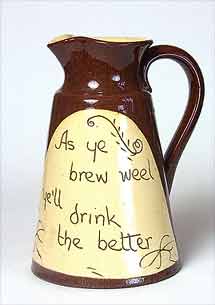
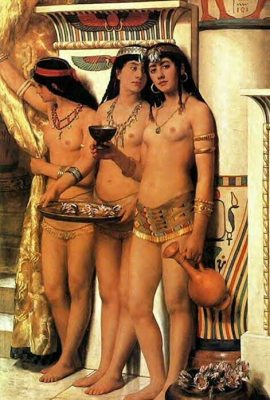 "In water you see your own face, but in wine the heart of it's garden." - ancient Egyptian proverb
"In water you see your own face, but in wine the heart of it's garden." - ancient Egyptian proverb
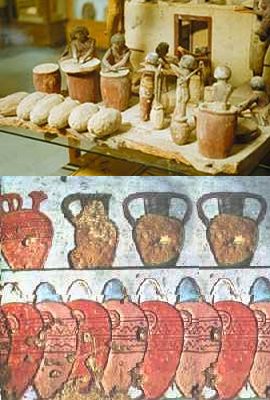 "...sent you to school when you were ready to be taught writing, and she waited for you daily at home with bread and beer." -- Instructions of Ani, regarding his mother
"...sent you to school when you were ready to be taught writing, and she waited for you daily at home with bread and beer." -- Instructions of Ani, regarding his mother

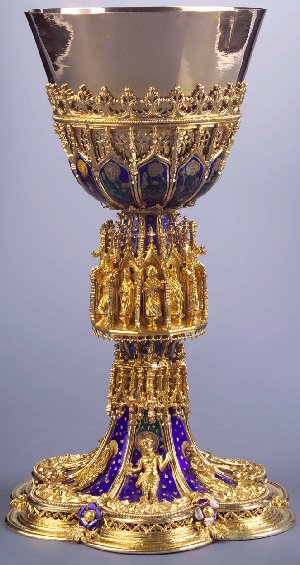 EARLY CHRISTIAN PERIOD
EARLY CHRISTIAN PERIOD
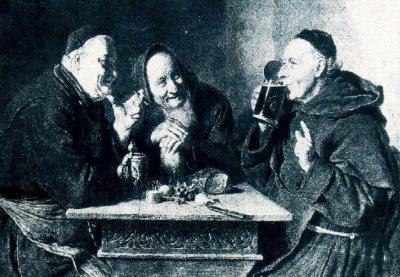 THE MIDDLE AGES
THE MIDDLE AGES
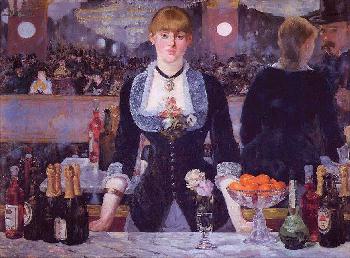 EARLY MODERN PERIOD
EARLY MODERN PERIOD
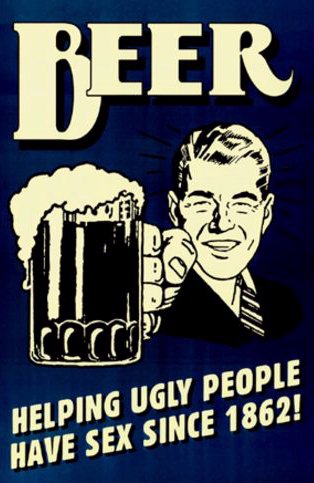 The seventeenth century also saw the Virginia colonists continue the traditional belief that alcoholic beverages are a natural food and are good when used in moderation. In fact, beer arrived with the first colonists, who considered it essential to their well being (Baron, 1962, pp. 3-8). The Puritan minister Increase Mather preached in favor of alcohol but against its abuse: "Drink is in itself a good creature of God, and to be received with thankfulness, but the abuse of drink is from Satan; the wine is from God, but the Drunkard is from the Devil" (quoted in Rorabaugh, 1979, p. 30). During that century the first distillery was established in the colonies on what is now Staten Island (Roueche, 1963, p. 178), cultivation of hops began in Massachusetts, and both brewing and distilling were legislatively encouraged in Maryland (Austin, 1985, pp. 230 and 249).
The seventeenth century also saw the Virginia colonists continue the traditional belief that alcoholic beverages are a natural food and are good when used in moderation. In fact, beer arrived with the first colonists, who considered it essential to their well being (Baron, 1962, pp. 3-8). The Puritan minister Increase Mather preached in favor of alcohol but against its abuse: "Drink is in itself a good creature of God, and to be received with thankfulness, but the abuse of drink is from Satan; the wine is from God, but the Drunkard is from the Devil" (quoted in Rorabaugh, 1979, p. 30). During that century the first distillery was established in the colonies on what is now Staten Island (Roueche, 1963, p. 178), cultivation of hops began in Massachusetts, and both brewing and distilling were legislatively encouraged in Maryland (Austin, 1985, pp. 230 and 249).
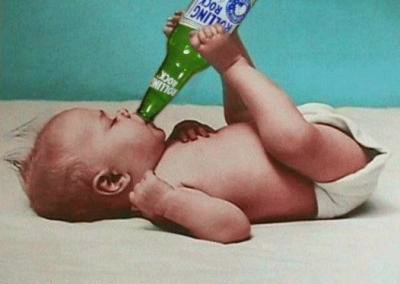 SUMMARY AND CONCLUSION
SUMMARY AND CONCLUSION